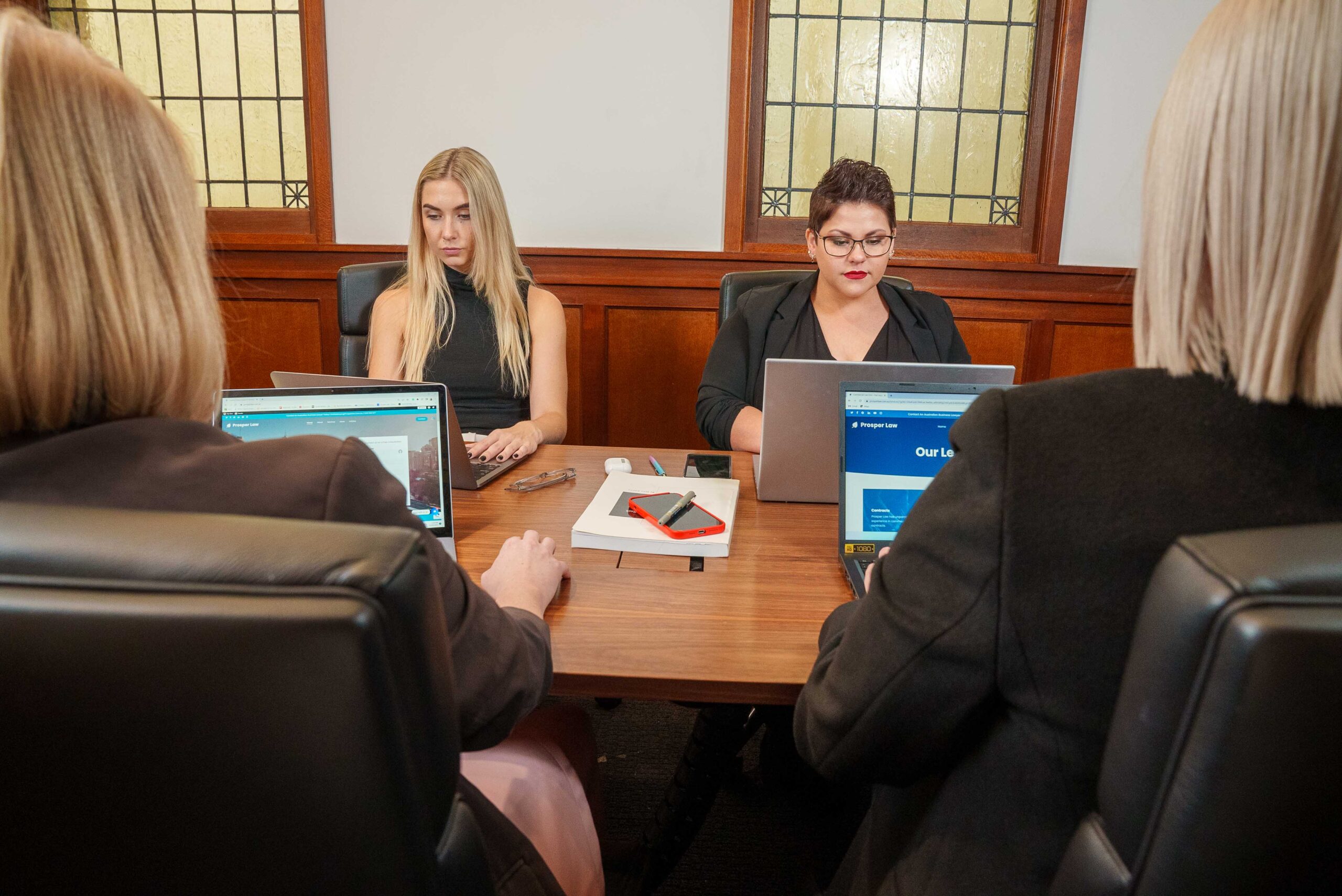
Dangers of using ChatGPT in Contract Drafting
This article discusses the risks of using artificial intelligence, like the Chat GPT model, for making legal contracts. Knowing its limits and the possible effects of using it is important.
Consulting contracts are a type of professional services agreement that governs the provision of professional advice. Consulting agreements are often used for architects, engineers and other professional services firms and advisors.
This article is written for engineers, architects, quantity surveyors and other professional consultants. After reading this eBook, you will have a better understanding of consulting contracts and how they operate within Australia.
While it is important to develop a general understanding and appreciation of consulting contracts, you should always consult with a commercial contract lawyer for legal advice. This is particularly so when it comes to contracts that are complex and of high value.
This eBook will dive into the (at times) seemingly complicated realm of consulting contracts.
But really, when you break everything down to its constituent parts, it’s really relatively straightforward. I don’t say that to sound like I find consulting contracts easy; just that if you take a concept, strip away the legal ‘fluff’ and go back to first principles, the logic shines through and you can see an issue or an opportunity for what it is.

When you are negotiating a consulting contract, the purpose of the contract review process is to fairly and appropriately balance the risk between the consultant and its client. Where contracts are one-sided and place unfair risk onto one party (that has little control over the kinds of risk that are being imposed on it) It’s arguable that this is not in the interests of either the engineer/architect or the client.
Placing contractual obligations on a consultant that they cannot possibly control or necessarily comply with, is opening the doors to a potential dispute. This is because if the consultant cannot comply with the contractual obligation or they cannot control it, the risk of failure and its potential severity may be high.
Consulting contracts can take many different forms. The forms most commonly encountered in architecture and engineering are:
What form of consulting contract is best? Well, when you’re looking at it from the perspective of the consultancy firm, the more involvement the consultancy has in the creation or amending of the contract, the better.
Clients are, of course, going to have their bespoke consulting contracts written in a way that is most favourable to them, followed by using an Australian Standard (that is usually heavily edited). The thing about using a client’s consultancy agreement or a heavily edited standard form consulting contract, is that they often include obligations that are unreasonable and unfair to place on the engineer or architect.
The problem, however, is that because cash flow is passing from and controlled by the client, it is the client that holds the leverage. This translates into engineering and architectural firms having less power to insist that the consulting services proceed under their own terms and conditions. Instead, consulting firms often acquiesce to the demands of the client and either sign up to or enter into negotiations in relation to the client’s preferred form of a consulting contract.

If your client is new, it is (more so than existing clients), an unknown. However, you can ease the risks associated with dealing with new clients if you can reliably answer the following questions:
There’s a big difference when you’re dealing with sophisticated clients compared to less sophisticated clients.
When I say ‘sophisticated’, I don’t mean larger client organisations. I’m actually referring to clients that:
On the other hand, clients that are less inclined to negotiate consulting contracts or are less familiar with them can lead to protracted, combative and difficult negotiations.
Requests to negotiate terms can be met with:

It’s difficult to assess likely risks or problem areas within the consulting contract without at least having a basic understanding as to:
Having some background knowledge regarding the consulting firm’s engagement makes the contract review process much easier. Clauses that may have been a problem on one project may irrelevant on another.
But you can’t necessarily know that without understanding the context.
It is vital to read the whole consulting contract, not just one section or one page. Oftentimes, clauses within a contract are interlinked and the context of a clause cannot be fully determined without referring to another clause. A good example of this is where a definition clause gives context to an operative clause (that specifies a right or an obligation and makes use of a definition). Without reading the definition, the clause will only tell half of the story.
And just like any story, you might miss an important part of the plot if you skip over sections or don’t read the whole thing. The same is true of any contract, including a consulting contract.
There are lots of different approaches taken when it comes to editing contracts. Personally, I have found it easier to edit the consulting contract using tracked changes (this may involve converting a .pdf to a .doc so the document is editable).
I use this ‘tracked change’ version to inform a schedule of departures so I can easily refer back to the originally edited document at a later point.
However, I don’t usually provide this edited version to the counterparty. This is because:

After editing the consulting contract, I then start drafting a schedule of departures in a Word document. I avoid using excel to record contract departures because:
When creating a schedule of departures in Word, I generally use the following format:
| Clause Number | Requested Departure | Reason for Change | Client Response |
| | | | |
| | | | |
A word to the wise: if you skip over the ‘reason for change’ section, you should expect a lot of ‘no’ responses. This is because when starting out negotiating changes for a consulting contract, it is the why that is the most important part. Words mean little when the underlying basis for the change is not agreed to by both parties.
After understanding and agreeing to the why, the wording of the clause becomes easier.
Also, by setting out a departures schedule in a table, it is easy to track the parties’ position for that item.
To avoid someone playing middleman, it is easiest for the contract reviewer to send the comments directly to the client.
When sending comments to a client, it is important to consider what should be included in the cover email. For example:

Some clients want to quickly arrange a call to discuss departures. However, it is recommended that clients first respond in the schedule of departures so that both parties understand each other’s position regarding changes to the consulting contract.
Additional columns may need to be added to the schedule of departures, placed in landscape view and resized to A3.
At some point, no further columns will be able to be added to the departures table. This is a good indicator that an impasse may have been reached on certain contract amendments or that there is controversy or fundamental differences regarding aspects of the consulting contract.
If an impasse appears to have been reached at any stage during the contract review process or there is an urgency to close out and sign the consulting contract, the next step is to get the client on the phone…
The key to negotiating over a call is to prepare. Understanding the issues and why a change was requested in the first place, as well as any potential fall-back positions, is key to productive verbal negotiations.
I have often found negotiating over the phone or a video call to be quicker and easier than the (sometimes) protracted process of emailing back-and-forth.
Negotiating over the phone can cause people to drop their guard and encourage problem-solving and outcomes. Even if the contract negotiations are not closed out at the end of the call, you may find that there has been significant progress and the parties can then focus on the final contentious items.
Once all of the changes to the consulting contract have been agreed upon, the next step is to have the final agreement issued for checking and signing.
There are a few important steps to take before putting pen to paper:
Once the consulting contract is signed and returned to the client, keep a record of the contract and save it somewhere that is accessible by the engineers and architects working on the project.

Sometimes there is a misconception that the phrase ‘reasonable’ does not have any legal meaning. People will throw their hands in the air, scoff at the word and decry ‘what does reasonable mean anyway?’.
Contrary to this common misconception, the standard of reasonableness and the meaning of ‘reasonable’ is somewhat well defined by law.
An indemnity refers to an obligation for one party to reimburse another for certain specified losses they may incur on the happening of certain events. Indemnity clauses can be worded in many different ways and it is always important to ensure that an indemnity is only provided for things that are within the indemnifying party’s ability to control or avoid.
An obligation on one party to indemnify another does not necessarily require the indemnifying party to have done anything wrong. This is why a consulting contract will often include an indemnity clause because unlike a claim for negligence or breach of contract, the indemnified party does not need to prove the elements of the cause of action.
Instead, all that the indemnified party needs to show is that the event for which the indemnifying party has agreed to indemnify the other party for has happened and has (or depending on the wording of the clause, may) caused the indemnified party to suffer some kind of loss.
Worst of all from the perspective of the engineer or architect is reversionary indemnity clauses. These are indemnity clauses that require the engineer or the architect to reimburse the client for loss that the client has caused itself or someone else to incur. Seems unfair, right? While that may be the case, they are still legally enforceable.
Indemnities that are contained in a consulting contract may be problematic for engineers and architects. The extent to which they are problematic will heavily depend on the wording of the indemnity clause.
Here are a few of the reasons why an indemnity clause may create issues:
We provide legal advice to business and individuals across Australia, no matter which State or Territory you are located. Our easy-to-access, online legal services mean that you can talk to our lawyers wherever you are, at a time that suits you.
4.5
Google Reviews

Don’t hesitate – reach out for your free legal assistance today. Your peace of mind is just a click or call away!

This article discusses the risks of using artificial intelligence, like the Chat GPT model, for making legal contracts. Knowing its limits and the possible effects of using it is important.

Setting off refer to the legal mechanism that allows one party to offset or deduct a certain amount of money, loss, damage, or expense owed to them by the other

A consulting contract is an agreement between a professional advisor and a client. A consulting agreement is an essential tool for consultants and can make all the difference when it comes to claiming variations